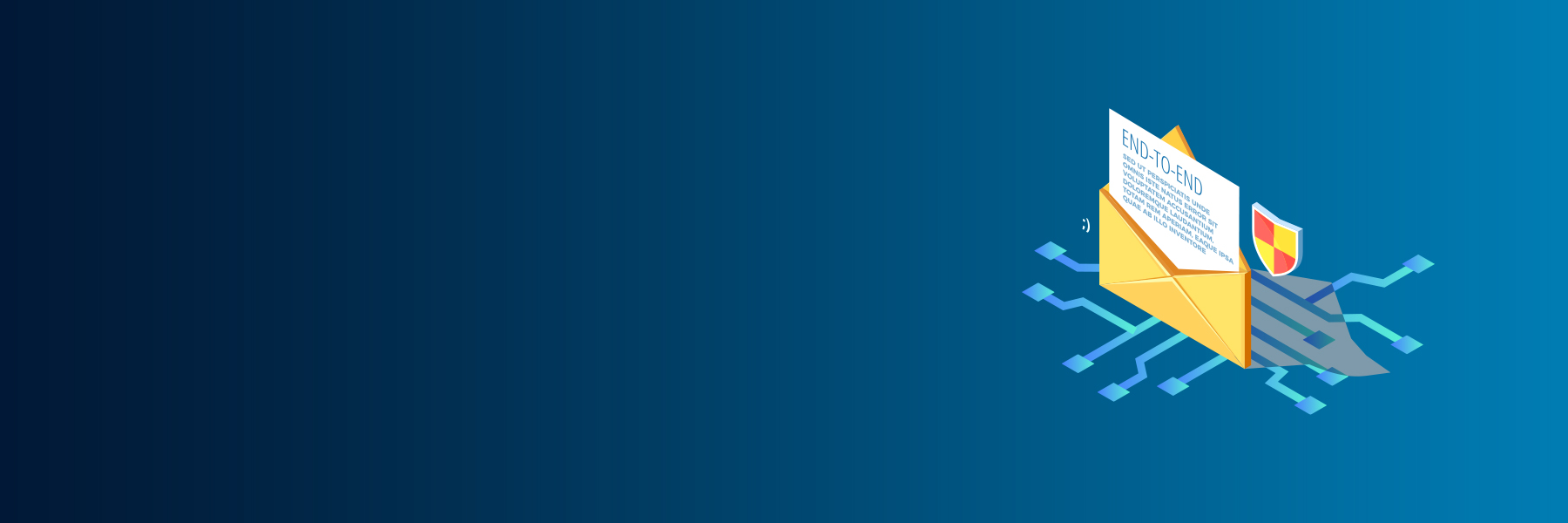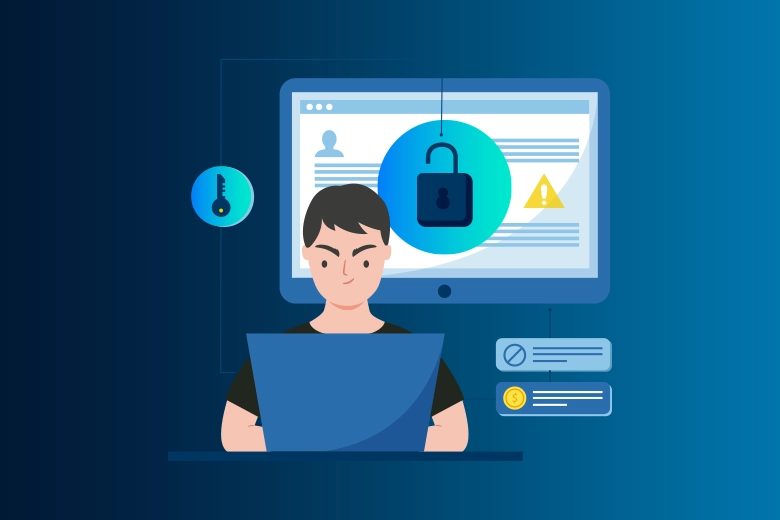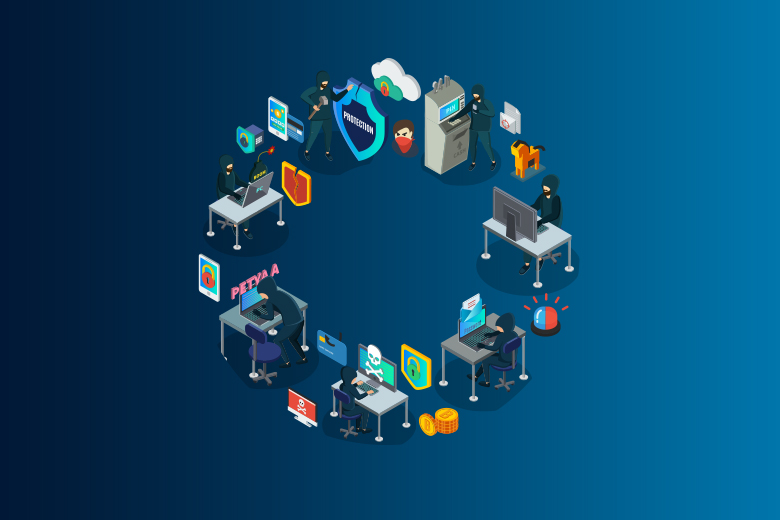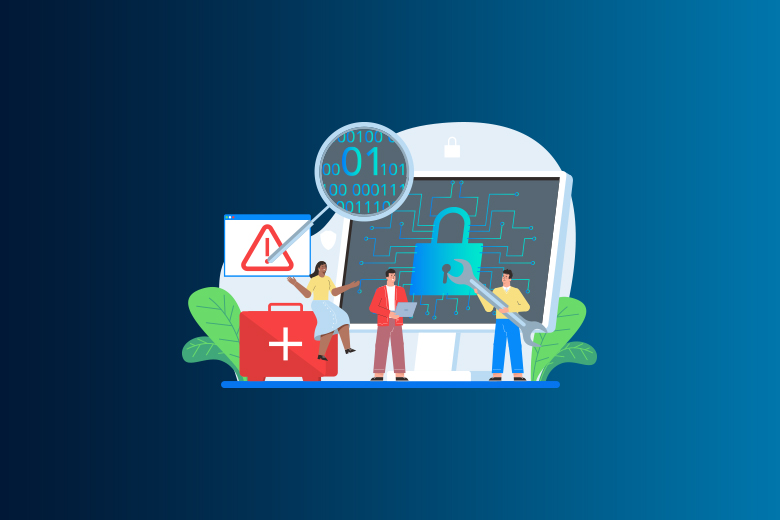11 March 2024
SafeAeon Inc.In this digital age, most conversations take takes place online. Email is still an important way to communicate for both personal and business reasons. But the way email works means that its information could be hacked, which raises privacy and security concerns.
A new study from Radcliffe University found that in the first half of 2023 alone, more than 5 billion email records were stolen. This shows how common it is for cybercriminals to target email addresses. This weakness could lead to a number of problems, including identity theft.
Hackers can get private information like passwords, credit card numbers, and social security numbers in your emails, which can lead to identity theft. You are very likely to lose money and have your name stolen if you do this.
Data breaches: Large-scale data breaches can happen to businesses and groups that depend on email for contact if their email systems are hacked. This makes private information about clients and employees public.
Targeted scams and phishing attacks: Tricks and attacks that are meant to trick people: Hackers often use email to carry out phishing attacks. People are tricked into giving out personal information or clicking on harmful links that can put malware on their devices.
Email encryption, on the other hand, is a strong way to protect your online interactions from these threats. Encryption basically scrambles your email's content so that people who don't have the decoding key can't read it. This adds an important layer of security, making sure that only the person who is supposed to see the message can read it.
Even though Gmail doesn't have built-in end-to-end encryption, there are still a number of good ways to keep your emails safe. This guide will go into more detail about these tactics, giving you the power to protect your email privacy and keep other people from reading your messages without your permission. You can make the internet a safer place for yourself and your valuable information by learning about the risks and looking into privacy options.
How to Understand S/MIME and PGP/MIME Email Encryption Protocols?
A Quick Look at Email Encryption
Email encryption makes sure that messages sent over the internet are kept private and are correct. S/MIME (Secure/Multipurpose Internet Mail Extensions) and PGP/MIME (Pretty Good Privacy/Multipurpose Internet Mail Extensions) are the two main algorithms used for encryption. Both use a key exchange system where each user has a public key and a private key that they use to secure and decrypt emails. Let's take a closer look at each protocol to make things easier.
Protocol for S/MIME Encryption
A lot of iOS devices support S/MIME, and it works perfectly with popular web-based email clients like Gmail and Outlook. There is one central body that decides on the encryption algorithm and gives out certificates for authenticating and encrypting emails. Due to the fact that big email platforms already support it, S/MIME is mostly used in business or industry to protect emails and attachments.
Protocol for PGP/MIME Encryption
Users have more power over encryption levels with PGP/MIME's decentralized trust model. This system can be used for personal or business purposes, and it works with Android devices. The best thing about PGP/MIME is that it can protect emails on a lot of different systems, even VPNs, which S/MIME can't do.
Setting up encryption for emails in Gmail and Outlook Gmail uses S/MIME encryption, which needs to be enabled by both the sender and the receiver for it to work.
How To Encrypt Gmail?
Follow Google's instructions to turn on shared S/MIME.
Write your email normally, then click the lock icon next to the recipient to change the S/MIME settings or the amount of encryption. The state of encryption is shown by:
Green: Protected with S/MIME; decoding needs a private key.
Gray: TLS-protected, but only works if both sides support TLS.
Red: Email that isn't secure.
Outlook Encryption for Email
Outlook can use S/MIME, but it takes a little more work to set it up.
How To Encrypt Email In Outlook?
- Get a digital certificate from your company and install the necessary controls as shown in Office's setup steps to turn on S/MIME encryption.
- To add digital signatures or secure all of your messages, go to the gear menu, select S/MIME settings, and pick the level of security you want.
- To encrypt a single message, go to the "More Options" menu inside the message and turn on or off the "Encrypt this message (S/MIME)" setting. Make sure the receiver can decrypt S/MIME encrypted emails.
- It is very important to understand and use email encryption correctly for both personal and business messages. These encryption protocols and steps make sure that sensitive information stays safe.
Encrypting iPhone and iPad Emails
- Mobile phones and tablets running iOS already have S/MIME security built in.
- To begin, open the "Settings" app and tap on "Mail."
- Go to "Accounts" and pick out the email account you want to protect.
- "Encrypt by Default" should be set to "Yes" after you tap "Advanced."
- A lock icon next to the recipient's name in an email draft shows that the message is encrypted. To encrypt your email, make sure the lock is locked. If there is a blue lock, encryption is possible. If there is a red lock, the recipient needs to allow S/MIME settings.
- When you use third-party encryption tools with some email providers
Not all email clients and devices support S/MIME by default, so you need to use third-party encryption tools to send and receive emails safely.
Making Yahoo Emails Secure
- Yahoo encrypts emails with SSL, but for S/MIME or PGP/MIME methods, you need a third party to do the encryption for you.
- Keeping Android Emails Safe
- For Android users to secure emails, they need to download a third-party app that supports S/MIME and PGP/MIME, which need extra setup.
- Protecting Your AOL Email
- Users of AOL must encrypt their emails by hand using a third-party tool that follows PGP/MIME guidelines. They must first download the PGP software they need.
Full Services for Encrypting Email
- You can encrypt emails, attachments, and contacts by hand, but many private email services make it easier to encrypt them automatically.
- Proton Mail has different price levels that offer end-to-end and zero-access encryption with PGP support.
- There are both free and paid choices.
- Apps for Android and iOS
- Mail Cipher: It works with Android and can secure files with S/MIME, OpenPGP, TLS, and PDF.
Apps for Android; Price: Free
Mailvelope is an add-on for your browser that lets you use OpenPGP encryption for a number of email services.
Price: Chrome, Firefox, and Microsoft Edge are all free apps.
Virtru: Gives Gmail and Outlook users end-to-end security.
There are both free and paid choices.
Chrome and Google Workspace are apps.
Users of Outlook and Apple Mail can use StartMail to secure their mail with PGP.
Sendinc 2.0 offers military-grade encryption that works with all major email apps and costs money.
There are both free and paid choices.
Apps: Add-in for Outlook
PreVeil: Encrypts Gmail, Outlook, and Apple Mail from end to end, in browsers and on phones.
There are both free and paid choices.
Apps for Android and iOS
Skiff Mail lets iOS and Android users encrypt their emails from end to end.
There are both free and paid choices.
Apps: Best Practices for Email Security on Android and iOS
It's important to follow these email security best practices, whether you use encryption or not:
- Use a mix of letters, numbers, and symbols to make strong passwords.
- For extra protection, turn on two-factor authentication (2FA).
- To avoid getting malware, don't click on links or open files from people you don't know.
- You can scan files with antivirus software, even if the email is encrypted.
- You should not check your email on public Wi-Fi because it could put your personal information at risk of being stolen.
Conclusion
A lot of people around the world use Gmail for their email. Encrypting Gmail emails is very important to know. This information is very important for people who want to keep private data safe from people who shouldn't have access to it. There is a key that only the person who has the key can use to read these messages. People who secure their email are taking a big step. They make sure that their private talks stay secret. This is a very important step to take when sending private data. This kind of information includes things like banking information, personal identifiers, or private business data. In these situations, a data theft can have very bad results.
Encrypting your emails is more than just a technical step to keep them safe. It has to do with making a mindset of safety and privacy. People today often treat personal information like a good or service. There are a lot of privacy breaches. By encrypting your emails, you show that privacy is important to you. It shows that you want to protect them.
Learning how to encrypt Gmail via SafeAeon is more than just a good idea for safety. It's an important part of being a good internet citizen in the modern world.














